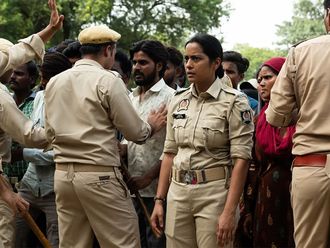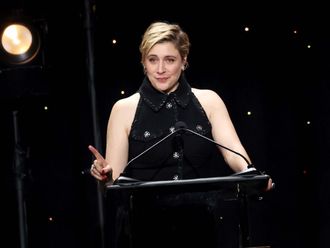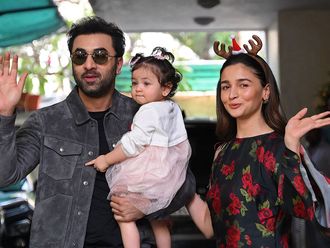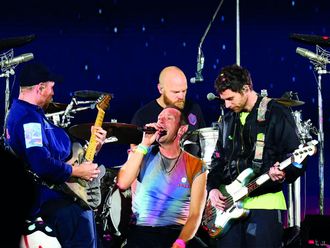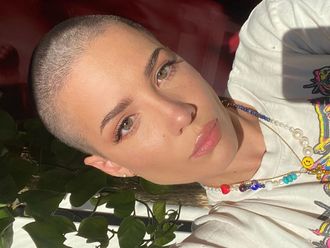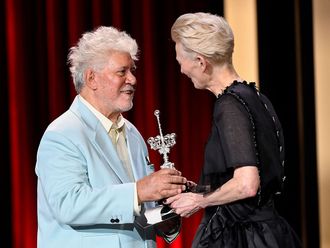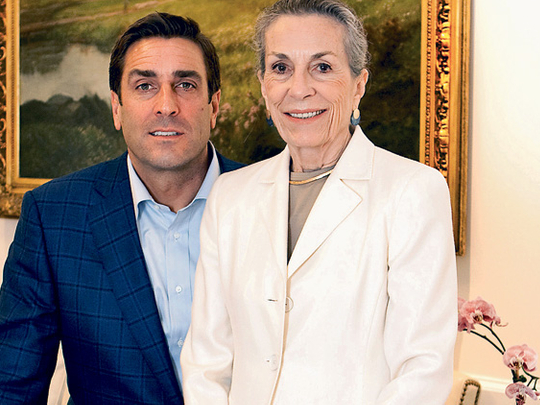
It is morning in San Francisco and a multinational group of journalists is sitting around a table facing an elegant woman in her mid-seventies. She is listening closely to a flustered Spanish journalist. "What," says the journalist in halting English, "is your most favourite Disney film?"
The question would be inane were it not addressed to the woman at the head of the table: Diane Disney Miller, the only biological child of Walter Elias Disney and as such the only direct blood link to one of the towering figures of 20th-century culture.
The first little girl in the world (or joint first, along with her adopted sister, Sharon) to watch Mickey Mouse caught up in a swirling deluge in Fantasia, or to see Dumbo flap his ears and take flight, or to weep over the death of Bambi's mother.
When she was 6 or 7, her father brought her home a sketch of a girl done by the Mexican painter Diego Rivera: "To Diane", it said, "daughter of the great artist."
Diane rarely speaks to the press; for the past 40 years she has lived in relative obscurity in California's Napa Valley. She has agreed to be interviewed to celebrate the 70th anniversary of Fantasia, her father's masterpiece and her favourite of the Disney canon. And people have flown from all over the world to meet her.
Memories of childhood
Her childhood, she says, was blissful. Every evening at 7 o'clock the family dined together. Talk often turned to Walt's childhood in Marceline, Missouri, and in Kansas City.
When Diane was about 16, she asked her father whether she could get a summer job. Many of her school friends were working. "He said: ‘You don't need a job,'" she remembers. "‘If you get one you'll be taking one away from someone who does.' I think that's very telling. ‘I can look after you,' that was his message."
At the age of 20 she married Ron Miller, a college football star. They bought a house funded by the sales of a book, The Story of Walt Disney, which Diane was supposed to have written. In fact, the book was written by a man called Pete Martin, making Diane a rare sort of biographer — one with a ghost. She was there for the interview sessions, sitting in the garden with Martin and her father as they recorded hours of tapes about Walt's life.
The whole thing was a scheme to get some ready cash to Diane and her new husband, as Walt's money was tied up in developing Disneyland. Walt didn't groom Diane or her sister to play any serious part in his business. "He never pushed us into anything," she says, "and I kind of wish he had now that I think back on it. I think he didn't want us to suffer."
We meet in San Francisco at a place that sums up the contradictory nature of her role: the Walt Disney Family Museum. The museum is housed in a clean red-brick building fronted with slim white wooden pillars, nestled in the verdant northeastern tip of the San Francisco peninsula.
It was financed by the Walt Disney Family Foundation, of which Diane is the secretary and her son Walter the president. She cut the ribbon to open it just over a year ago. "He's kind of alive in this place," she says. "You see him and you hear him."
The Walt Disney Company had nothing to do with establishing the museum; indeed, Diane says: "The company probably wouldn't have done it." The company, after all, had no particular need to. Under the stewardship of Michael Eisner, CEO from 1984 to 2005, its revenues had grown 2,000 per cent. The greedy Mouse gobbled up other businesses, diversifying until the animation department became only one among many.
Creative work was outsourced to companies such as Pixar — a relationship that soured when the bullish Eisner refused to renegotiate a more favourable contract with Pixar's then-CEO, Steve Jobs. The Walt Disney Company was no longer synonymous with family — unless the family in question was the Borgias.
Diane saw the bloodletting at close hand: Her cousin, Roy E. Disney, oversaw the coup that ousted her husband, Ron, in favour of Eisner. When "Uncle Walt" was alive, there was a simple hierarchy in the business: everyone answered to Walt, the prime mover and patriarch.
Diane sighs when I ask what her father would have made of the way the company developed after his death in 1966: "I can't even begin to answer that question," she says wearily. "It's a whole different company. It's huge. It's so big." She remembers her children telling her that their friends didn't know that Walt Disney was a man: They only knew his name as a brand.
A symbolic power
For his daughter, of course, the opposite is true. She never sat on the board of the company and in the late 1980s she sold the last of her personal stock. Her father's name and likeness are owned by the Walt Disney Company.
It also owned almost all the material Diane needed for the displays in her museum, aside from Disney's Academy Awards, a few documents and the artwork that the family acquired once they'd started the project. The only power left to her was symbolic: her name.
It is a measure of her influence that her comments always made it into the press. She spoke out against various Disney biographers, including Neal Gabler, whose book — "a monstrous piece of libellous junk" — had been officially sanctioned by the company. Gabler had suggested that her father had neglected her mother in favour of his model train set.
She debunked rumours: that her father was an FBI agent, that he had had his body cryogenically frozen, that he was the illegitimate son of a Spanish mother. In 2007, she was the first, even before new Disney CEO Bob Iger, to denounce a Hamas children's television show that featured a Mickey Mouse lookalike singing about children arming themselves with AK-47s.
"I am ashamed," she wrote, "that the Walt Disney Company — the company my father created — is associated with this disturbing distortion of history." The museum is the final, fullest realisation of her defence of her father.
Does she ever wish she had taken on more of a role in the company, so she could have kept his vision alive that way? "No, no, my role's just what I wanted it to be," she says. "I don't know what I could've contributed that would've been important to the company. My purpose is to bring the man to people, not the brand. He was a good man and I wanted people to know that."



